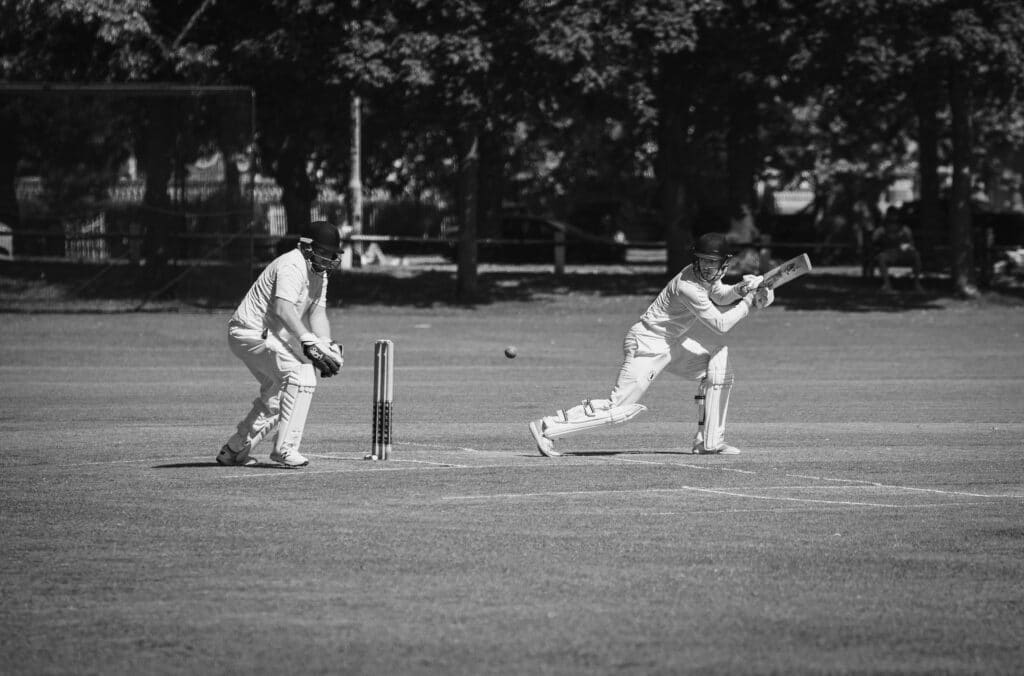Anatomical slings: Enhancing movement and Stability
What we’ll cover
- What are muscle slings?
- Key insights
- What are muscle slings?
- What are the types of muscle slings?
- Posterior Oblique Sling (POS):
- Anterior Oblique Sling (AOS):
- Deep Longitudinal Sling (DLS):
- Why Are Muscle Slings Important?
- Exercises to Strengthen Muscle Slings
- Exercises for Anterior Oblique Sling
- Exercises for Posterior Oblique Sling
- Exercises for Lateral Sling
- Exercises for Deep Longitudinal Sling
- FAQs
Anatomical slings: Enhancing movement and Stability
The human body is incredibly complex. When you move, it requires the co-ordination and contraction of many different parts of the body with nothing working in isolation. Muscles, ligaments, tendons and fascia work in unison together to generate efficient and effective body movement. As physiotherapists, we assess holistically when examining what factors can be contributing to an injury. For example, the action of throwing a tennis ball not only utilises the upper limb and shoulder, but also relies on good core strength and co-ordination with your lower body.
Our physiotherapist Vernon Mittal investigates what we commonly refer to as “anatomical slings” or “myofascial slings” and how this contributes to safe and effective movement. These slings are comprised of both superficial and deep muscles.
What are muscle slings?
Your muscle or myofascial slings consist of different types of soft tissue including muscles, fascia and ligaments that are interconnected to one another to provide stability and mobility. These structures work together when muscles contract to produce movement of the body. The body consists of 4 main slings which when working effectively help us move better, produce more force and create more speed and power. Essentially, these slings help transfer force between our upper and lower limb whilst providing a stable core.
We know that when there is a weak component in a sling, it can create dysfunction resulting in reduce performance and increased likelihood of injury. Equally important, injury to a component of the sling can result in dysfunction if not effectively rehabilitated.
Key insights
- Muscle slings are essential for maintaining proper movement patterns, balance, and overall athletic performance.
- There are four key muscle slings: anterior oblique, posterior oblique, lateral, and deep longitudinal. Each plays a role in different types of movements, from rotation to stability and propulsion.
- Weak muscle slings can lead to common issues like lower back pain, hip and pelvic instability, shoulder injuries, and knee or ankle problems.
- Strengthening these slings through targeted exercises (like planks, deadlifts, side planks, and bird dogs) improves efficiency, stability, and injury prevention.
- Incorporating these exercises into your routine helps build functional strength, supporting better athletic performance and everyday movement.
- Prioritising muscle sling strength can reduce the risk of overcompensation by other muscles, preventing long-term injury.
What are muscle slings?
Your muscle or myofascial slings consist of different types of soft tissue including muscles, fascia and ligaments that are interconnected to one another to provide stability and mobility. These structures work together when muscles contract to produce movement of the body.
The body consists of 4 main slings which when working effectively help us move better, produce more force and create more speed and power. Essentially, these slings help transfer force between our upper and lower limb whilst providing a stable core.
We know that when there is a weak component in a sling, it can create dysfunction resulting in reducing performance and increased likelihood of injury. Equally important, injury to a component of the sling can result in dysfunction if not effectively rehabilitated.
What are the types of muscle slings?
There are four different types of muscle slings, each playing a crucial role in the body’s movement and stability by coordinating muscle groups to function together efficiently during various activities.
Posterior Oblique Sling (POS):
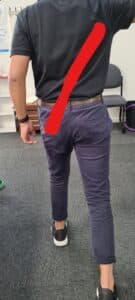
| Muscles Involved | Latissimus dorsi, Gluteus maximus (opposite side), Thoracolumbar fascia (TLF) |
| Function | Connects from the glute to the opposite shoulder, supporting cross-body movements. |
| Key Role | Crucial for throwing when the foot is planted and the arm is cocked back. |
| Common Issues |
|
Anterior Oblique Sling (AOS):
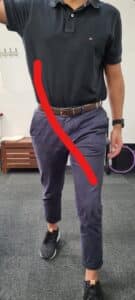
| Muscles Involved | External and internal obliques, Adductor muscles (opposite side) |
| Function | Connects the obliques to the groyne, aiding in rotational movements. |
| Key Role | Important for throwing, just before the ball is released. |
| Common Issues |
|
Deep Longitudinal Sling (DLS):
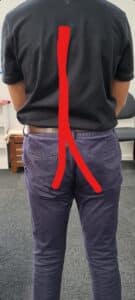
| Muscles Involved | Erector spinae, Multifidus, Thoracolumbar fascia (TLF), Sacrotuberous ligament, Biceps femoris |
| Function | Stabilises the sacroiliac joint (SIJ) and connects the spinal muscles and hamstrings. |
| Key Role | Helps maintain stability in the lower back and pelvis. |
| Common Issues |
|
Lateral Sling (LS):
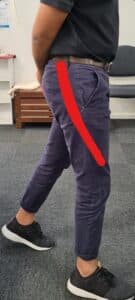
| Muscles Involved | Gluteus medius, Gluteus minimus, Tensor fascia latae (TFL), Iliotibial (IT) band |
| Function | Stabilises the pelvis and connects lateral hip muscles to the knee. |
| Key Role | Essential for balance during single-leg activities and preventing lateral pelvic drop. |
| Common Issues |
|
Your physiotherapist will assess your injury in the context of how it may affect your myofascial sling. It is crucial to ensure that these slings are working optimally to prevent future or recurrent injuries. If you have been experiencing recurrent soft tissue injuries, book an appointment with our team by calling or booking online.
Why Are Muscle Slings Important?
Muscle slings are vital as they enhance movement efficiency, stability, and injury prevention. By coordinating multiple muscle groups, slings allow for smoother, more powerful movements.
For example, the posterior oblique sling helps generate speed in running by linking the glutes and lats, making movement more efficient.
Strong slings also improve balance and stability during dynamic actions, such as cutting or jumping, with the lateral sling stabilising the pelvis during single-leg movements.
Additionally, well-functioning slings prevent injuries by promoting proper movement patterns and avoiding overcompensation by weaker muscles. People with strong, balanced slings are less prone to strains and imbalances that can lead to injury.
Exercises to Strengthen Muscle Slings
Strengthening the four major muscle slings enhances movement efficiency, stability, and injury prevention. Below are three effective exercises for each sling.
Exercises for Anterior Oblique Sling
Involves the abdominal muscles, hip flexors, and adductors. It supports rotational movements and helps stabilise the pelvis.
- Exercise 1: Plank with Shoulder Taps
How: Begin in a plank position. Tap one shoulder with the opposite hand, alternating sides. This exercise builds core strength and stabilises the anterior sling. - Exercise 2: Russian Twists
How: Sit on the floor with knees bent and feet lifted. Hold a weight with both hands and rotate your torso from side to side. This movement targets the obliques and works on rotational strength. - Exercise 3: Cable Woodchops
How: Stand with feet shoulder-width apart, holding a cable handle above shoulder height. Pull the handle diagonally across your body, engaging your core. This mimics the twisting motion of the anterior sling in daily and athletic movements.
Exercises for Posterior Oblique Sling
Involves the glutes, latissimus dorsi, and thoracolumbar fascia. It’s critical for movements like sprinting, lifting, and throwing.
- Exercise 1: Single-Leg Deadlift
How: Stand on one leg, hinge at the hips, and lower your torso while extending the other leg behind you. This strengthens the glutes and hamstrings, engaging the posterior sling. - Exercise 2: Barbell Hip Thrusts
How: Sit on the floor with your upper back against a bench and a barbell over your hips. Drive your hips upward, squeezing your glutes. This directly targets the gluteus maximus, a key muscle in the posterior sling. - Exercise 3: Bent-Over Rows
How: With feet shoulder-width apart, hinge at your hips and hold a barbell or dumbbells. Pull the weight toward your chest, engaging the lats and posterior chain. This exercise strengthens the latissimus dorsi, improving posterior oblique sling function.
Exercises for Lateral Sling
Includes the gluteus medius, adductors, and quadratus lumborum. It supports lateral stability, especially during single-leg movements.
- Exercise 1: Side Plank with Leg Lift
How: In a side plank position, lift your top leg. This targets the glutes and obliques, stabilising the pelvis and strengthening the lateral sling. - Exercise 2: Lateral Band Walks
How: Place a resistance band around your legs, just above the knees. With a slight squat, take lateral steps to one side. This activates the gluteus medius, improving pelvic stability. - Exercise 3: Single-Leg Squats
How: Stand on one leg, slowly lowering your body as if sitting in a chair, then rise back up. This engages the lateral sling by challenging balance and hip stability.
Exercises for Deep Longitudinal Sling
Runs from the lower back through the hamstrings and calves, supporting posture and forward movement.
- Exercise 1: Bird Dog
How: Start on all fours. Extend one arm and the opposite leg, hold, and switch. This exercise targets the entire posterior chain for stability and coordination. - Exercise 2: Deadlifts
How: Stand with feet shoulder-width apart, grip the barbell, and lift it while keeping your back straight. This compound exercise strengthens the lower back, glutes, and hamstrings, key components of the deep longitudinal sling. - Exercise 3: Glute Bridge March
How: Lie on your back, lift your hips into a glute bridge position, and alternate marching your legs. This builds strength in the glutes and hamstrings while enhancing core stability.
FAQs
- Can muscle slings be strengthened through exercise?
Yes, muscle slings can be strengthened through targeted exercises. These exercises typically focus on functional movements that engage multiple muscle groups simultaneously, mimicking real-life activities. Exercises that improve coordination, stability, and balance are particularly effective in strengthening muscle slings. Examples include planks, lunges, squats, and rotational movements.
- How do muscle slings differ from individual muscles?
Muscle slings are functional groups of muscles that work together to perform complex movements, while individual muscles have specific, isolated functions. Muscle slings operate across multiple joints and often in different planes of motion, providing stability and coordinated movement throughout the body. In contrast, individual muscles typically act on a single joint and in a more limited range of motion.
- How long does it take to see improvements in muscle sling function through targeted exercises?
The time frame for noticeable improvements can vary depending on factors such as exercise frequency, intensity, and individual physiology. Generally, some improvements in coordination and stability can be felt within 2-4 weeks of consistent practice. More significant changes in strength and function may become apparent after 6-8 weeks of regular training. However, long-term benefits and substantial improvements may take several months of dedicated practice.
- Are there any age-related changes in muscle slings that people should be aware of?
Yes, age can affect muscle slings. As we age, there’s typically a decrease in muscle mass and strength (sarcopenia), which can impact the function of muscle slings. Older adults may experience reduced flexibility, stability, and coordination. However, regular exercise can help maintain and even improve muscle sling function at any age. It’s important for older adults to focus on exercises that promote balance, stability, and functional strength to support healthy aging.
- Are there any contraindications for muscle sling exercises?
While muscle sling exercises are generally safe, there are some contraindications to be aware of:
- Acute injuries or pain in involved muscle groups
- Uncontrolled high blood pressure
- Certain heart conditions
- Recent surgery, especially abdominal or spinal surgeries
- Pregnancy (some exercises may need modification)
- Severe osteoporosis
It’s always advisable to consult with a healthcare professional or a qualified fitness instructor before starting a new exercise program, especially if you have any pre-existing health conditions.
- How often should one perform muscle sling exercises for optimal results?
For optimal results, it’s recommended to incorporate muscle sling exercises into your routine 2-3 times per week. Each session should last about 20-30 minutes. However, the frequency and duration can be adjusted based on individual fitness levels and goals. Consistency is key, and it’s important to allow for adequate rest and recovery between sessions. As with any exercise program, it’s best to start gradually and increase intensity and frequency over time as your strength and endurance improve.



